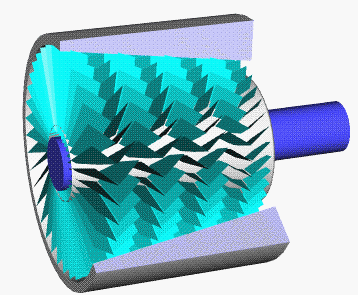As a Dutchie, 27 April
is a national holiday when we celebrate the birthday of our King,
Willem-Alexander. A day of celebration throughout the complete country, but
this year I will not be present. I will celebrate Willem-Alexander his birthday
by spotting 200+ aircraft at the ILA Berlin Air Show. In this blog I will give
a prospect about what I am going to witness at the airshow, in a following blog
I will give a report about the visit.
The ILA (Internationale Luft- und Raumfahrtausstellung)
Berlin is a bi-annual airshow held at Berlin-Schönefeld airport. ILA Berlin is
one of the largest airshows happening today and the location, the Berlin
ExpoCenter Airport (at Schönefeld), houses five large halls which is the centre
of networking for over 1000 exhibitors. Along these exhibitors are OEMs,
suppliers and MRO-service companies in the field of civil and military
aviation. The airshow features a static and flying exhibition displaying over
130 unique types featuring UAVs, (military) training aircraft, large airliners,
historic aircraft, bizzjets and helicopters.
Next to aviation, aerospace technology will also be on display but will
not be discussed in this article.
New aircraft on
display at ILA
Airshows are perfect occasions for the aircraft
manufacturers to display and demo new types. One of the aircraft I am most
excited about is the Sikorsky CH-53K King Stallion, the largest and heaviest
helicopter under development for the US Military. It will be competing against
the CH-47 Chinook for acquisition by the German Air Force of a replacement for
the CH-53. The CH-53K features an aircraft which is powered by three 7500 shp
GE38-1B turboshafts and could lift 12 tonnes externally. The CH-53K is promised
to give a flight demo and I am exciting to see this humongous helicopter manoeuvre.
The F-35A will make an appearance at ILA 2018 as well. One
year ago, at the Paris Air show, the F-35A gave its first areal capability
demo. The F-35 is not been scheduled to flight yet, but I keep my hopes up to
hear that F-135 engine roaring next week.
The Airbus A340 BLADE (Breakthrough Laminar Aircraft
Demonstrator in Europe) will make its debut at the airshow. The A340 BLADE is a
demonstrator with two outer transsonic laminar outer-wings, which could
drastically decrease the wing friction which results in less fuel and thus
fewer emissions, making aviation greener.
This year’s edition features an even bigger spectrum of
UAV’s compared to past editions. UAVs as big as the European Male RPAS with a
spanwidth of 25m and a MTOW of two tonnes or as small as the Black Hornet
Minidrone which fits in your back pocket will be on display. The Zepyhr,
Airbus’ solar powered aircraft which soars at 70000 ft and could provide an
alternative to satellites.
What’s more?
Next to the newcomers, more civil and military aircraft will
be displayed. The flying program offers quite a display from the German Air
Force and a demo by the Spanish national display team: Patrulla Águila. The
flight schedule features also slots for a ‘UAS exhibitor’ and the ‘ILA
highlights’ but as of writing of this blog, no details were provided yet for
these slots. At the static display, next to all the ‘state of the art’
aircraft, historic aircraft are displayed. One of my personal favourites, the
Douglas DC-3, will be on static as well. For the military-aviation enthusiasts,
the show provides enough: aircraft like the C-130J Hercules, NH-90, Eurofighter
Typhoon, CV-22A Osprey, E-3A Sentry AWACS, Airbus A400M and many more are
confirmed to be on display. For people who come to see big jets, the show
provides as well: the Boeing 747-8 and the Airbus A380 shall provide a lot of
shadow in the static display area. Overall, it promises to be a show worth
visiting!
ILA: the numbers
Analyzing
the aircraft list provides some interesting insights. To start with a 3.6 to 1
ratio of military market focused aircraft to civil market focused aircraft. The
obvious reason is the wide range of mission types versus ‘conventional’ flying.
From small drones to huge troop and cargo transporters, for almost every
mission type, several types are offered at ILA.
Comparing
all the aircraft categories, military combat- and training aircraft and
helicopters/rotorcraft jump out. Within the helicopter/rotorcraft category, the
focus is laid on the military market.For civil passenger aircraft, the huge
orders usually take place at the Farnborough or the Paris airshow. Comparing
the Paris airshow of last year, Boeing displayed the 787-10 and the 737-MAX 9
while Airbus displayed the A380 ‘plus’, the A350-1000 and the A321 neo. This
year, Airbus will bring the A380 and A350-900 and Boeing will bring the 747-8
for the civil market.
Next article I will
lay more focus on the upcoming technologies I have witnessed myself on the
airshow next week. If you are visiting ILA, I hope I provided some more insight
on the aircraft on display.


















